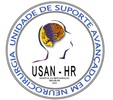Seizures and Anticonvulsants after Aneurysmal Subarachnoid Hemorrhage
Giuseppe Lanzino, Pietro Ivo D’Urso, Jose Suarez and The Participants in the International Multi-disciplinary Consensus Conference on the Critical Care Management of Subarachnoid Hemorrhage
comentário por: Flavio Monteiro Oliveira Jr, médico intensivista da USAN - Hospital da Restauração
Crises convulsivas e estados epilépticos não-convulsivos são relativamente comuns em pacientes acometidos por hemorragia subaracnóide aneurismática. A grande questão é que o tratamento "profilático", com fenitoína (hidantal) destes possíveis episódios, nesta população, ainda permanece controverso.
Este artigo fez uma revisão da literatura digital disponível na língua inglesa a respeito do tema de 1980 a outubro de 2010 e encontrou um total de 56 papers que abordavam o tema de forma mais específica. Segundo a revisão, crises convulsivas geralmente são mais comuns no início (até o terceiro dia) pós sangramento ou ressangramento de origem aneurismática, e que a incidência de episódios convulsivos seria mais comum na população submetida ao tratamento cirúrgico (clipagem) do aneurisma em relação ao tratamento endovascular (coiling). Nenhum dos trabalhos avaliados mostrou benefício claro da profilaxia anti-convulsivante com hidantal e a maioria que utilizou o hidantal por longos períodos, mostrou pior prognóstico em relação aos que não o utilizaram. No entanto, esta pode não ser uma verdade absoluta, uma vez que os dados disponíveis são ainda escassos para se elaborar recomendações.
Grandes questões foram levantadas nesta revisão: A maioria dos estudos usaram quase que exclusivamente a fenitoína (hidantal) como droga anti-convulsiva; só os trabalhos que usaram fenitoína por longos períodos após o sangramento ou ressangramento apresentaram pior desfecho quando comparados aos trabalhos que a utilizaram por até tes dias após o ictus. Embora ainda não se tenha dados suficientes, o trabalho afirma q existe uma tendência em se usar profilaxia anti-convulsivante por até 3 dias após o evento de sangramento e que isto não resultaria em um desfecho desfavorável para o grupo tratado, como tem mostrado alguns estudos.
Seizures and seizure-like activity may occur in patients experiencing aneurysmal subarachnoid hemorrhage. Treatment of these events with prophylactic antiepileptic drugs remains controversial. An electronic literature search was conducted for English language articles describing the incidence and treatment of seizures after aneurysmal subarachnoid hemorrhage from 1980 to October 2010. A total of 56 articles were included in this review. Seizures often occur at the time of initial presentation or aneurysmal rebleeding before aneurysm treatment. Seizures occur in about 2% of patients after invasive aneurysm treatment, with a higher incidence after surgical clipping compared with endovascular repair. Non-convulsive seizures should be considered in patients with poor neurological status or deterioration. Seizure prophylaxis with antiepileptic drugs is controversial, with limited data available for developing recommendations. While antiepileptic drug use has been linked to worse prognosis, studies have evaluated treatment with almost exclusively phenytoin. When prophylaxis is used, 3-day treatment seems to provide similar seizure prevention with better outcome compared with longer-term treatment.

 RSS Feed
RSS Feed

